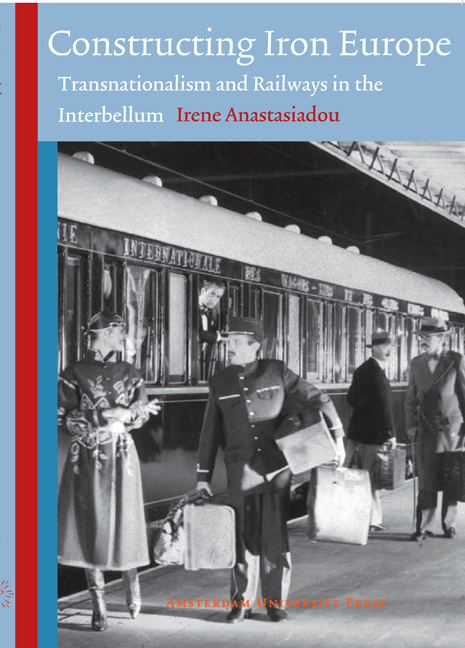Book contents
- Frontmatter
- Acknowledgements
- Contents
- Abbreviations
- 1 Introduction
- 2 Europe in Crisis and Railway Visions
- 3 Shifting Railway Regime
- 4 European Integration, European Fragmentation
- 5 Constructing the National, Constructing the European: Greece
- 6 Uncovering Railway Europe
- Bibliography
- Summary
- Curriculum Vitae
- Appendix I Timeline of Conferences and Conventions held in the Early years After the war, Concerning Railways:
- Appendix II Schedule of International Expresses in the 1930s
- Appendix III List of Illustrations
1 - Introduction
- Frontmatter
- Acknowledgements
- Contents
- Abbreviations
- 1 Introduction
- 2 Europe in Crisis and Railway Visions
- 3 Shifting Railway Regime
- 4 European Integration, European Fragmentation
- 5 Constructing the National, Constructing the European: Greece
- 6 Uncovering Railway Europe
- Bibliography
- Summary
- Curriculum Vitae
- Appendix I Timeline of Conferences and Conventions held in the Early years After the war, Concerning Railways:
- Appendix II Schedule of International Expresses in the 1930s
- Appendix III List of Illustrations
Summary
In 1910, an anonymous reporter described the experience of international railway travel, saying:
‘Indeed, the railway itself is an object lesson as to the futility of mere artificial restrictions on progress. The passenger boards his train at Calais and frontiers are wiped out between the English Channel and Bridinsi; or he sets out on his journey from St. Petersburg and his destination is the distant port of Vladivostok in the Far East. For him the artificial distinction that calls this “Europe” and that “Asia” is wiped out.’
In interwar Europe, railways provided contemporaries with the experience of international travel. This fascination is underlined by the fact that quite a few novels were inspired by the international railway experience as well. The best known was Agatha Christie's famous novel Murder on the Orient Express, written in 1932. The murder that detective Hercules Poirot, the main character in her novel, is called upon to solve takes place on board the Simplon Orient Express, which was one of the best known trains of the Compagnie internationale des wagons lits (henceforth Wagons-Lits). Detective Poirot began his journey in Syria with the destination of London, boarding the Taurus Express at Aleppo (Syria). The train, after crossing the Bosporus, then travelled on to Istanbul where there was a connection to the Simplon Orient Express that would run through Trieste and Calais to London. In the end, the train stopped unexpectedly somewhere in Yugoslavia due to heavy snow on the tracks, and the plot of the novel unravels. The international atmosphere runs through the novel. On the second day of the journey, Poirot is having his meal with his old friend and travelling companion, Bouc. The Belgian director of the Wagons-Lits, in the luncheon car of the train, Bouc, observing his surroundings notes:
‘Ah!’ he sighed. ‘If I had but the pen of a Balzac! I would depict this scene.’ He waved his hand. ‘It is an idea, that,’ said Poirot. ‘Ah, you agree? It has not been done, I think? And yet it lends itself to romance, my friend. All around us are people, of all classes, of all nationalities, of all ages. For three days these people, these strangers to one another, are brought together.
- Type
- Chapter
- Information
- Constructing Iron EuropeTransnationalism and Railways in the Interbellum, pp. 11 - 32Publisher: Amsterdam University PressPrint publication year: 2012



